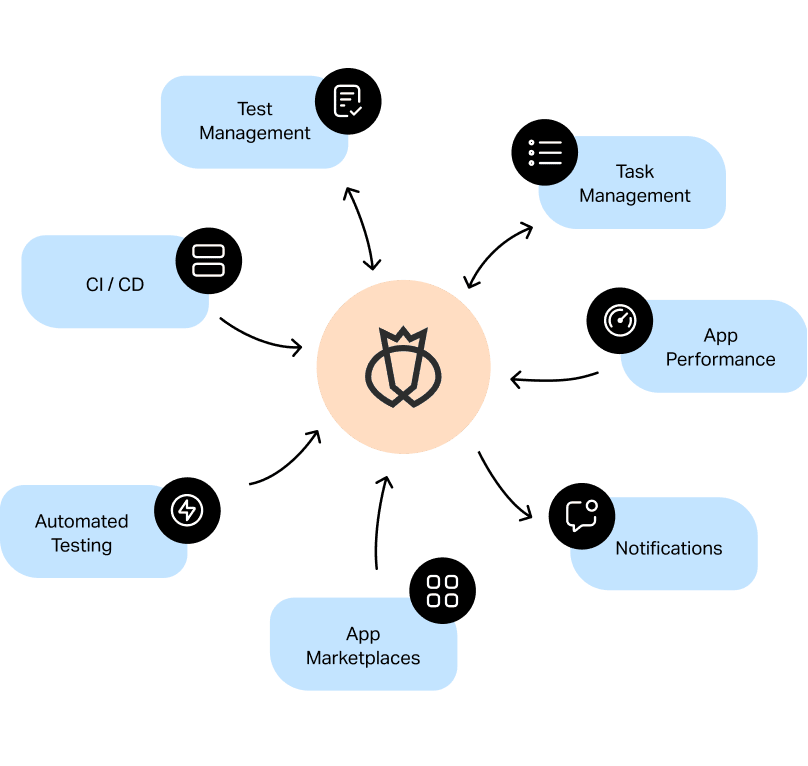Automation Testing Structures: Simplifying Complicated Testing Situations
Automation Testing Structures: Simplifying Complicated Testing Situations
Blog Article
The Future of Software Program Growth: Using the Possible of Automation Examining for Faster, Extra Reliable Launches
In the world of software program growth, the mission for faster, more trusted releases has long been a central focus. As technology developments and customer assumptions evolve, the role of automation screening in achieving these goals has ended up being increasingly prominent - automation testing. The prospective advantages of automation screening are large, encouraging not just to speed up release cycles yet also to improve the overall high quality and uniformity of software items. In a landscape where rate and precision are extremely important, taking advantage of the capabilities of automation screening stands as an essential technique for remaining ahead.
The Power of Automation Evaluating
In the world of software program growth, the application of automation screening has proven to significantly boost performance and quality control processes. By automating repetitive and time-consuming manual testing tasks, software application teams can enhance their screening efforts, lower human mistakes, and speed up the overall development lifecycle. Automation screening permits the fast implementation of examination instances across various environments and setups, offering designers with rapid feedback on the quality of their code changes.
Among the crucial advantages of automation testing is its ability to raise examination coverage, ensuring that even more features and functionalities are thoroughly evaluated. This extensive screening strategy assists recognize defects early in the development cycle, minimizing the likelihood of costly bugs reaching manufacturing. Automation testing advertises continual integration and continuous distribution techniques, allowing teams to release software program updates extra often and dependably.
Accelerating Launch Cycles
The velocity of release cycles in software application advancement is vital for staying competitive in the swiftly progressing technology landscape. Shortening the time between launches permits firms to react promptly to market needs, incorporate individual responses immediately, and outpace competitors in supplying innovative functions. By leveraging and adopting dexterous methods automation screening devices, advancement groups can streamline their procedures, identify pests previously, and ensure a higher quality product with each release.
Speeding up launch cycles also allows software companies to preserve an affordable side by swiftly attending to protection vulnerabilities and adjusting to transforming regulatory requirements. Furthermore, regular releases aid in structure consumer depend on and loyalty as users gain from continuous enhancements and bug fixes. This repetitive approach promotes a culture of continuous enhancement within growth teams, motivating collaboration, technology, and a concentrate on delivering worth to end-users.
Making Sure Constant Quality Control
Amid the increased release cycles in software program growth, preserving regular quality control becomes extremely important for making certain that each version fulfills the highest requirements of capability and reliability. Regular quality control entails an organized technique to testing and assessing software to recognize and fix any kind of issues or issues without delay. To accomplish this, software program growth teams should develop robust QA processes that are incorporated throughout the development lifecycle. This includes defining clear top quality requirements, conducting comprehensive screening at each stage of development, and leveraging automation screening tools to enhance the process.
Overcoming Common Testing Obstacles
Addressing and fixing usual screening difficulties is necessary for guaranteeing the efficiency try this out and efficiency of software development procedures. One prevalent difficulty is the lack of thorough examination insurance coverage, where testers may forget particular scenarios, resulting in prospective insects sliding into the last item. This concern can be mitigated by complete examination planning, incorporating varied screening strategies, and leveraging automation screening to boost insurance coverage. An additional usual obstacle is the upkeep of examination scripts, especially in active atmospheres where constant changes take place. Examination manuscript maintenance can be streamlined by utilizing robust examination automation structures that offer simple manuscript modifications and updates. Additionally, coordinating testing initiatives across different groups and departments can present a challenge as a result of communication gaps and differing concerns (automation testing). Implementing clear interaction channels, establishing standard processes, and fostering cooperation with tools like issue trackers and task administration systems can assist overcome this difficulty and make certain smooth screening sychronisation. By proactively attending to these difficulties, software application growth groups can improve the high quality and integrity of their launches.
Executing Automation Examining Techniques

Once the examination cases are chosen, teams should spend time in developing robust test manuscripts that are maintainable, multiple-use, and scalable. Partnership in between designers, testers, and stakeholders is critical to guarantee that the automation screening aligns with the general task goals and demands. Continuous assimilation and release pipelines can better enhance the automation testing process by instantly setting off examinations whenever new code is committed. By embracing automation screening approaches, software development teams can achieve quicker evaluating cycles, higher examination insurance coverage, and inevitably deliver even more trustworthy software launches.
Final Thought
Finally, automation testing provides an effective device for accelerating launch cycles, guaranteeing regular high quality assurance, and overcoming common testing challenges in software program advancement. By harnessing Check Out Your URL the capacity of automation testing approaches, organizations can accomplish much faster and much more reputable releases. automation testing. Accepting automation testing is essential for staying competitive in the hectic globe of software program advancement

In conclusion, automation screening offers a powerful device for increasing release cycles, making certain consistent quality assurance, and overcoming typical testing difficulties in software application advancement.
Report this page